Invited Speakers
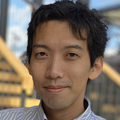
Science and engineering of excitons in low-dimensional nanomaterials
Short Biography
Yuhei Miyauchi is a professor of the Institute of Advanced Energy at Kyoto University. After he received Ph.D. in Engineering from the University of Tokyo, he studied photophysics of nanomaterials at Columbia University (USA), Naogoya University (Japan), and Kyoto University (Japan). His research interests lie in understanding the excited-state dynamics and energy conversion processes in low-dimensional nanomaterials such as carbon nanotubes and two-dimensional semiconductors. He has explored both fundamental physics in low-dimensional systems and their new applications in energy-related fields. Development of new methods for synthesis and assembly of nanomaterials is also within the scope of his research activities.
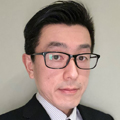
Growth and functionalization dynamics of atomically thin 2D materials revealed with in-situ monitoring processing
Short Biography
Dr. Toshiaki Kato has completed his Ph.D from Tohoku University, Japan, in 2007. He was a visiting researcher at Stanford University from 2008 to 2009. He joined the faculty of the Tohoku University in 2007 and he is currently an Associate Professor of Electrical Engineering. His research interests have ranged from structural-controlled synthesis to optoelectrical device applications of layered nano materials such as carbon nanotubes, graphene, graphene nanoribbon, and transition metal dichalcogenides.
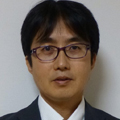
Advanced process technologies for monolithically integrated tunable lasers
Short Biography
Tatsuro Kurobe was born in Kanagawa Prefecture, Japan, in 1969. He received the B.E. and M.E. degrees from Kyoto University, Kyoto, Japan, in 1997 and 1999, respectively. In 1999, he jointed The Furukawa Electric Co. Ltd., Yokohama, Japan, where his interests were the dry etching process, and regrowth process for photonic integrated circuit. He has been engaged in research and development of widely tunable laser sources and control circuit since 2002 and commercialized an integrable tunable laser assembly (ITLA).
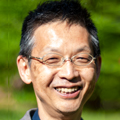
Room temperature operation of spin-functional optical devices based on 0D-2D hybrid semiconductor nanostructures
Short Biography
Dr. A. Murayama graduated from the Department of Applied Physics at Tohoku University and joined Asahi Glass Co., Ltd. (AGC Inc. at present) in 1985. He became an Associate Professor at the Institute of Multidisciplinary Research for Advanced Materials of Tohoku University in 2001 and a Professor at the Faculty of Information Science and Technology of Hokkaido University (Sapporo, Japan) in 2008. His research group is working on semiconductor nanomaterials, such as quantum dots, and devices utilizing their electronic and optical functionalities.

Design of Inorganic Nanowires based on Coordination Structure for Smart Artificial Olfactory System
Short Biography
Nagashima is a Professor of Research Institute for Electronic Science (RIES), Hokkaido University. He received Ph.D. degree from Osaka University in 2010. In 2010-2015, he worked as a specially-appointed assistant professor at The Institute of Scientific and Industrial Research (ISIR), Osaka University and in 2015-2020 as an assistant professor/associate professor at Institute for Materials Chemistry and Engineering (IMCE), Kyushu University. In 2020-2023, he worked as an associate professor at Graduate School of Engineering, The University of Tokyo. From 2023, he has a full professorship and started his laboratory. His research interests are inorganic nanomaterials, artificial olfactory sensors, and data science.

Functionalization of Group IV Semiconductor Nanowire Channels
Short Biography
Naoki Fukata is a Field Director of Research Center for Materials Nanoarchitectonics (MANA), National Institute for Materials Science (NIMS), Japan and a Group Leader of Nanostructured Semiconducting Materials Group. He received his Ph.D. in engineering from University of Tsukuba. He worked at Tohoku University as an Assistant Professor and then a Lecturer at University of Tsukuba. He is working at NIMS from 2005. He is also a Professor at University of Tsukuba.
His research group is focused on the functionalization of semiconducting nanomaterials such as zero-dimentional nanocrystals, one-dimentional nanowires and two dimentional nanosheets for the applications of next-generation high speed transistors, high efficiency solar cells and quantum technology.

Atomic-Layer Processing of Ferroelectric HfO2 Thin Films for Future Memory Applications
Short Biography
Dr. Migita received Ph.D degree from Osaka University, Japan, in 1995. He joined the Electrotechnical Laboratory, which was reorganized as AIST in 2001. In AIST, he engaged in the Millennium Research for Advanced Information Technology (MIRAI) Project (2001-2011), the Collaboration Research Team Green Nanoelectronics Center (2010-2013), and others. His research topics are advanced Si-FET, metal/high-k gate stack technology, silicide junction, and ferroelectric oxide memories.
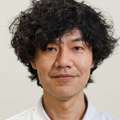
Hydroflux Process: a low temperature synthesis process to obtain highly crystalline layered transition metal oxides
Short Biography
Masaki MATSUI is currently a professor at Hokkaido University. He received Ph.D. in Engineering from Tokyo Metropolitan University in 2008. He worked at Toyota Motor Corporation from 2001 to 2008. Then, he moved to Toyota Research Institute of North America as a manager of Materials Research Department. He started academic carrier in 2012 at Mie University as a specially appointed associate professor. He moved to Kobe University as an associate professor in 2016. Then, he got the present position in 2021. His research interest is inorganic materials chemistry for beyond lithium-ion batteries.
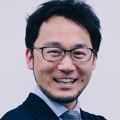
Optoelectronic physical reservoir devices based on nanocomposite films
Short Biography
Dr. Ikuno received his Ph.D. degree from Osaka University, Japan, in 2004. From 2004 to 2007, he was a postdoctoral researcher at the University of California, Berkeley, and Lawrence Berkeley National Laboratory. From 2007 to 2016, he was a senior researcher at Toyota Central R&D Labs. Since 2016, he has been an associate professor at Tokyo University of Science. His research interests are carbon-related nanomaterials, optoelectronic devices, energy conversion devices, and artificial intelligence devices.
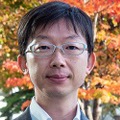
Bio-Inspired Strategies for Enhancing Underwater Adhesion: Lessons from Aquatic Organisms
Short Biography
Dr. Kurokawa received his Ph.D. degree from Hokkaido University, Japan, in 2005. From 2006 to 2007, he was a postdoctoral researcher at the Institute of Physical and Chemical Research (RIKEN). In 2007, he became an assistant professor at Hokkaido University of Science, and in 2013, he became an associate professor at Hokkaido University of Advanced Life Science. Since 2017, he has been a professor at Hokkaido University of Advanced Life Science. His research interests are a characterization of Novel Hydrogels with Superb function, Double-Network gel, and substitutes for tissues and organs.
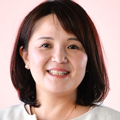
Medical Applications of Cell Origami and Formations of Tumors using Cancer-on-a-Chip
Short Biography
Dr Kaori Kuribayashi-Shigetomi performed researches to develop medical equipment in the master’s course in Hokkaido University, and received D.Phil. degree from the University of Oxford, UK, 2004. She developed a medical device named “origami stent graft” using the folding pattern of origami. She established the “cell origami” technique at the University of Tokyo, which enables three-dimensional cell culture folded like origami, with the micro-nano processing technology. Currently, she endeavors to apply this cell origami technology to regenerative medicine at Hokkaido University.
In 2013, she was the only one from Asia among the “25 women in robotics you need to know about”. And in 2014, she was the only winner of the Young Researcher Best Presentation Award from IEEE Engineering in Medicine and Biology Society (EMBS), in the field of Micro and Nanotechnology in Medicine. In 2018, her achievement of “cancer-on-a-chip device” was selected 25 top papers from "Top 100 in Cell and Molecular Biology" by "Scientific Reports".
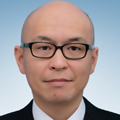
Characteristics and applications of organic piezoelectric material PLLA for sensors
Short Biography
Takashi Kasai received the B.S. degree in 2001 and the M.S. degree in 2003 in the micro system engineering from Nagoya University. He joined Omron Corporation in 2003 and engaged in research and development of MEMS physical sensors such as MEMS microphone, flow sensor, IR sensor and pressure sensor. Since 2022, he has worked in Innovative Solutions Center for ICT, Mitsui Chemicals, INC and is currently a researcher for mechanical and vital sensing.

Atomic Scale Processing for Quantum Computing
Short Biography
Dr Harm Knoops is the Atomic Scale Segment Specialist at Oxford Instruments Plasma Technology and holds a part-time assistant professorship position at the Eindhoven University of Technology. His work covers the fields of (plasma-based) synthesis of thin films, advanced diagnostics and understanding and developing plasma ALD, plasma ALE and growth of 2D materials. His main goals are to improve and advance atomic scale processes and applications for Oxford Instruments and its customers.

Application of metal oxide semiconductors to three-dimensional integrated circuits by ALD technology
Short Biography
In 1985, Dr.Y. Uraoka graduated from the Department of Electrical and Electronic Engineering at Toyohashi University of Technology. He joined Panasonic in the same year. In 1999, he became an Associate Professor at Nara Institute of Science and Technology, and in 2009, he became a Professor at the same university. His area of expertise is semiconductor engineering, with a main research focus on improving the performance of thin-film transistors for next-generation displays. He is JSAP Fellow.

Area Selective Deposition: Small Molecule Inhibition vs. Inherent Selectivity
Short Biography
Seán Barry is a Professor and Chair of the Chemistry Department of Carleton University (Ottawa, Canada), where his group works on the chemical mechanisms of surface chemistry and atomic layer processing (ALP). He has been the Senior Scientific Advisor for Precision Molecular Design, a start-up company in atomic layer deposition, and is presently the Director of the Carleton University Nanofab.
Seán has over 100 publications and patents on the topics of chemistry and ALP and has worked with world-leading companies like Lam Research, ASM, Applied Materials, BASF, and SK hynix to develop ALP solutions for the microelectronics industry. He is an active member of the American Vacuum Society, having been the Chair of the AVS Atomic Layer Deposition conference twice (2021, 2023) and f the upcoming Area Selective Deposition conference in Montreal (2024).
